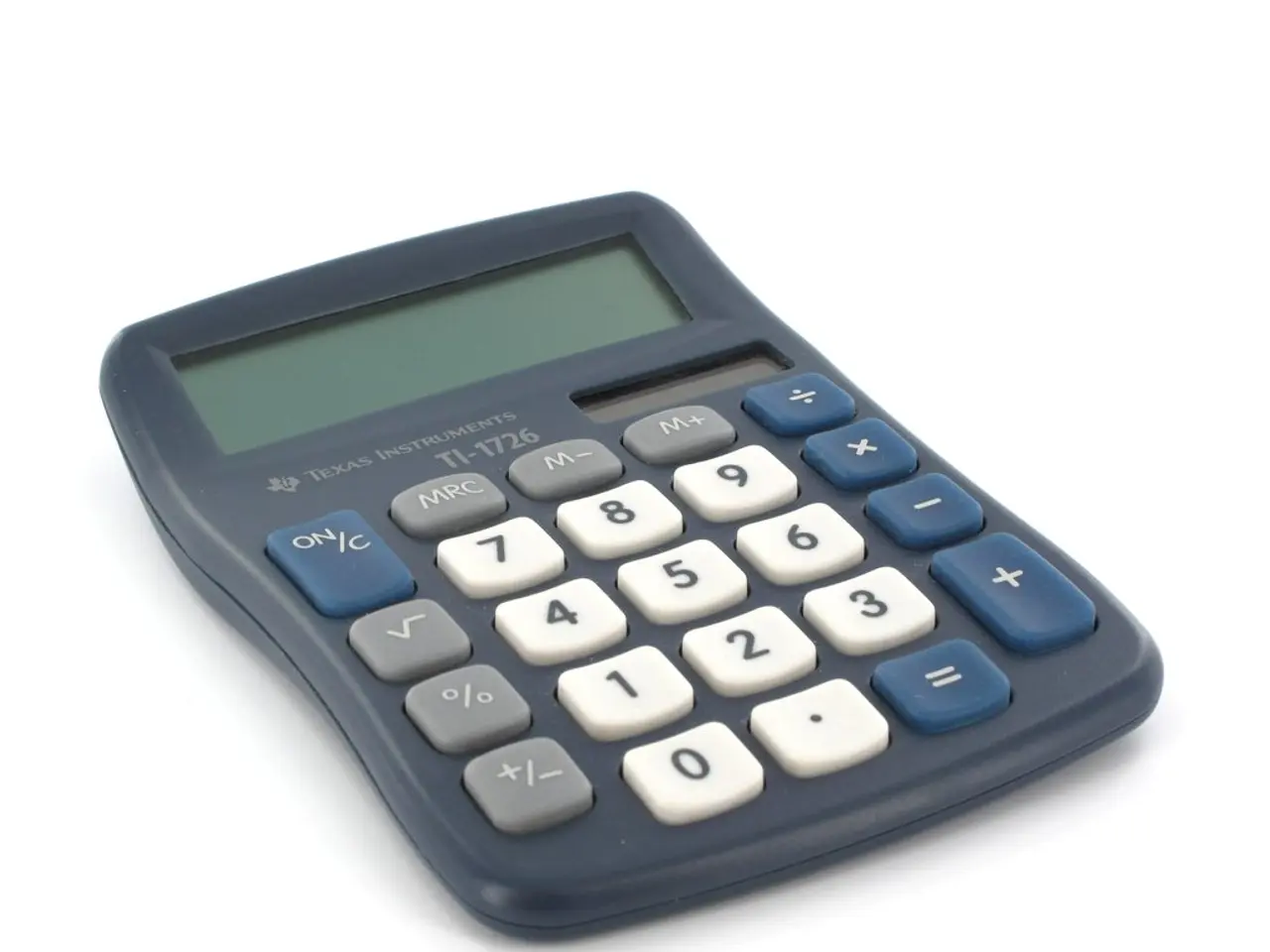The Functioning Mechanics of Calculators
In the 20th century, the invention and evolution of electronic calculators transformed both mathematics and technology, making complex calculations faster, more accessible, and portable. This transformation enabled significant advances in science, engineering, and education.
Initially, mechanical calculators and devices, such as the Curta calculator (developed in 1948), were bulky and expensive. However, the introduction of the first solid-state electronic calculators in the early 1960s marked a turning point. By leveraging transistor and integrated circuit technology, these calculators boosted speed and reduced size [1][4].
The Sinclair Executive, introduced by British inventor Sir Clive Sinclair in 1972, was considered the world's first affordable pocket calculator, with a thickness similar to a pack of cigarettes [3]. This innovation made calculators widely available, drastically lowering costs and making them accessible to students, professionals, and researchers alike [1].
Transistors in a calculator work by turning on and off, with electricity, to perform binary logic. The more transistors an integrated circuit has, the more advanced its functions may be [2]. Intel Corp. created the first commercially available single-chip microprocessor, the Intel 4004, in 1971, which was capable of performing basic arithmetic with 4 bits of information at a time [2].
This accessibility reshaped mathematics by shifting focus from manual computation to problem-solving and theory development since routine calculations could be automated. In technology, electronic calculators accelerated design, engineering, and data analysis workflows, influencing later developments in computing and programmable devices [1][2].
Moreover, the calculator's development was part of a broader evolution of computational devices: from mechanical calculators and projects like Charles Babbage’s 19th-century Analytical Engine—conceptualizing programmability—to 20th-century computers that integrated electronic calculation principles [2][4]. This trajectory culminated in the microprocessor era, which fundamentally transformed computing power and accessibility [4].
Online calculators have practical applications in various areas, such as weight loss, college loans, conversions, carbon footprint, and more. Liquid crystal displays (LCDs) are used in newer calculators to conserve power, as they rearrange light molecules to create a pattern on the display without requiring as much electricity [5].
Modern calculators, both basic pocket versions and complex scientific and graphing calculators, are available and used by professionals. Engineers continue to make advancements in calculator technology, exploring more ecologically sound components and materials [6]. Solar cell technology was used in consumer electronics, including calculators, by the late 1970s, allowing for efficient power usage [6].
Calculators have moved online and are no longer just tools for engineers, scientists, and accountants. They are now accessible to a general audience, expanding computational capacity and speed beyond mechanical limits and democratizing access to computational tools [1][2][4].
In summary, electronic calculators expanded computational capacity and speed, democratized access to computational tools, stimulated technological progress, shifted mathematical work toward conceptual and analytical challenges, and played a key role in technological modernization throughout the 20th century, laying the groundwork for today’s digital computing landscape [1][2][4].
References:
[1] Kaku, M. (2018). The Future of the Mind. New York: Doubleday. [2] Silver, D. (2018). Data: A Love Story. New York: Penguin Press. [3] Sinclair, C. (1972). The Sinclair Executive. Retrieved from https://www.sinclair-archive.org/calculators/executive/ [4] Copeland, B. J. (2014). The Essential Turing: Seminal Writings in Computing, Logic, Philosophy, Artificial Intelligence, and Artificial Life. Cambridge, MA: MIT Press. [5] Texas Instruments. (n.d.). History of Calculators. Retrieved from https://www.ti.com/tool/calculator-history [6] Canon. (n.d.). The First Handheld Calculator. Retrieved from https://global.canon/en/culture/history/calculator.html
- The invention of electronic calculators, aided by advancements in physics and electronics, led to rapid improvements in speed and size, making complex calculations more accessible and portable in the 20th century.
- The introduction of the first affordable pocket calculator, the Sinclair Executive, revolutionized the use of calculators in science, engineering, and education, as it was compact and cost-effective.
- Transistors, integral to calculator functions, perform binary logic by turning electricity on and off, with more transistors enabling more advanced calculator functions.
- Progress in computer technology, an offshoot from calculator developments, was a result of the creation of single-chip microprocessors capable of performing basic arithmetic operations.
- Online calculators, now available for a general audience, have practical applications in diverse areas including finance, health, and the environment, expanding computational capacity beyond mechanical limits.
- Modern calculator technology continues to evolve, with engineers striving for more ecological components and materials, such as using solar cell technology for efficient power usage.




